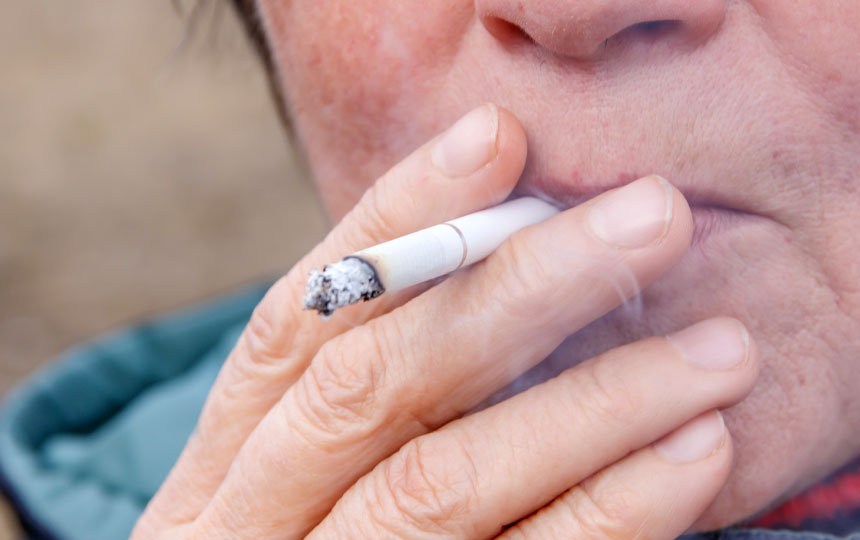
How do we get to smokefree before 2030 using behavioural science?
Who smokes, what makes it harder for them to quit, and how behavioural science can be leveraged to support smoking cessation towards Smokefree 2030.
More +Engaging young people in the UK with stop-vaping services requires strategies tailored to their unique behaviours, preferences, and social influences. Here are five evidence-based ways to make such services more appealing and effective.

Why:
It might be a bit obvious to say this, but with so many young people highly engaged with digital platforms, particularly social media and mobile apps, this is a must.
How:
If you have a ‘digital offer’ for young people, we recommend incorporating gamification elements, such as earning badges, tracking progress, or competing with friends. Leveraging social media influencers to promote anti-vaping messages is also worth testing. In terms of support, experiment with interactive tools, such as virtual chatbots or AI-driven coaches, to provide personalised quitting support to young people. This is more likely to work than asking a young person to visit a ‘physical’ in person service.

Why:
When it comes to communicating with young people, messages need to focus on immediate, visible benefits (e.g., better skin, improved fitness) as these resonate more strongly with young people. They are a generation who are used to instant gratification and quick payback. Patience and long-term planning is not their forte! Avoid talking about the long-term health risks – they are not interested.
How:
You might want to highlight how quitting vaping improves skin, lung capacity [now], and athletic performance. Create campaigns that appeal to aspirational lifestyles, linking quitting vaping with looking and feeling better. Use visual storytelling through platforms like TikTok and Instagram, showing "before and after" journeys of people who quit vaping. Present people living their ‘best life’ vape free.

Why:
We know from working with young people over 20 years that peer influence is a strong driver of behaviour in young people, so lean into this.
How:
Develop peer-led support groups or programmes where young people can share experiences and advice [ideally online or digitally as this is a generation that do not pick up the phone!] Incorporate youth-driven design in service development by involving young people in creating and promoting these services. If you don’t know how to do this, check out our services.

Why:
Young people may view vaping as part of a broader lifestyle, so integrating cessation into holistic health offers is likely to be more appealing.
How:
Combine vaping cessation with programmes on mental health, stress management, and physical fitness. Offer services in environments where young people naturally spend time, such as gyms, schools, and universities. Provide incentives like discounts on wellness products or gym memberships for engaging with stop-vaping services.

Why:
Young people respond well to humour and authentic stories, which can cut through traditional “scare tactics.” Which don’t often work with younger people.
How:
Why not try developing humorous or satirical content highlighting the absurdities of vaping culture to make quitting more appealing? Share authentic stories from young people who quit vaping, emphasizing relatable struggles and triumphs. It will also be important to collaborate with popular content creators to embed stop-vaping messages in a way that feels organic and entertaining.
For maximum effectiveness, ALWAYS co-create initiatives with young people to ensure the tone, format, and content resonate. Pilot programmes and gather feedback to refine approaches based on what engages and motivates them most. We have carried out over 100 co-production and co-creation workshops with young people in youth settings so please do get in touch if you need some help.

Who smokes, what makes it harder for them to quit, and how behavioural science can be leveraged to support smoking cessation towards Smokefree 2030.
More +
Kelly spent the early part of her career inside the NHS and working for national government shaping policy and communications around tobacco control before setting up Social Change. Over the last decade, Kelly has continued to work on many briefs to reduce smoking prevalence in England and Wales. Here are some of the insights from her work.
More +
Disposable vapes are a huge problem in the modern world, yet few people are aware of their potential dangers. In this blog, we will explore the harm disposable vapes can have on society and the environment and why we were 1 of 16 organisations writing to the government to call for a ban on these devices.
More +
The importance of co-creation in marketing – both commercial and not for profit – has grown mainly due to dramatic changes in the communications landscape over the last decade. The online world has besieged us and the internet has had an enormous impact on the way we interact with each other. Social media has allowed anyone to become an opinion former, writer and producer and has empowered people to voice their own opinions and create and distribute their own content.
More +Enter your email address below to access the Academy and our Webinars